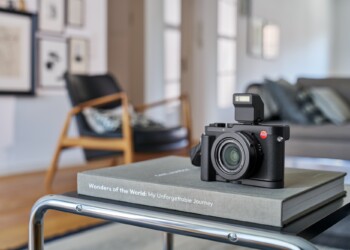Researchers from the University of Princeton and the University of Washington claimed to have jointly developed a next-gen micro-camera. According to a paper published on Nature by the former, the camera is about the size of a grain of salt and is capable of snapping high resolution, full colour images.
Development of micro-cameras is nothing new. In fact, such technologies are thought to have the potential in the medical field, where they can be used for detailed research and to detect any problems in the human body. However, current generation cameras of this particular scale have only been able to produce images with less than ideal quality and in a limited field of view.
“While sensors with submicron pixels do exist, further miniaturisation has been prohibited by the fundamental limitations of conventional optics,” the researchers say. “”A further fundamental barrier is a difficulty of reducing focal length, as this induces greater chromatic aberrations.”

The newly developed micro-camera, dubbed the “neural nano-optic system”, is based on metasurface technology where instead of relying on glass, its lens is created from a transparent “phase-changing” material. This allows it to rearrange its atomic structure when heated in order to change how the materials interact with light. Meanwhile, etched on the material’s surface are tiny and precise patterned structures that refract light in unique ways.
The researchers say that the camera’s metasurface is studded with 1.6 million cylindrical posts that are roughly the size of a virus. Each of these feature unique geometries and functions like an optical antenna. These cylinders combine with machine learning algorithms that interpret how light hits each post and combine the data together to produce crisp, full colour images in high quality. The team claims that the neural nano-optic system’s photos are “on-par” with a conventional camera that are thousands of times larger than it.
While this itself is considered a breakthrough, the researchers say there’s more improvements to be done to the micro-camera. Currently, the team is working to add more computational abilities to the device, as well as add the capability for object detection and sensing that would be relevant in medicine and robotics.

Furthermore, they are also envisioning a future where the technology can also be applied to consumer electronics such as smartphones. “[The] whole back of your phone would become one giant camera,” said University of Princeton assistant professor of computer science Felix Heide. “We could turn individual surfaces into cameras that have ultra-high resolution, so you wouldn’t need three cameras on the back of your phone anymore.”
A bold claim indeed, although it would be interesting nonetheless to see the technology featured on smartphones. However, it remains to be seen whether brands would actually go with this unconventional imaging approach on their future products.
(Source: University of Princeton / Nature / Petapixel)
Follow us on Instagram, Facebook, Twitter or Telegram for more updates and breaking news.




![Sony Unveils New ZV-E10 II Vlogging Camera; Starts From RM4,999 [Updated] 6 Sony ZV-E10 II Unveiled](https://www.lowyat.net/wp-content/uploads/2024/07/sony_Sony-ZV-E10-II-Unveiled-1-350x250.jpg)



